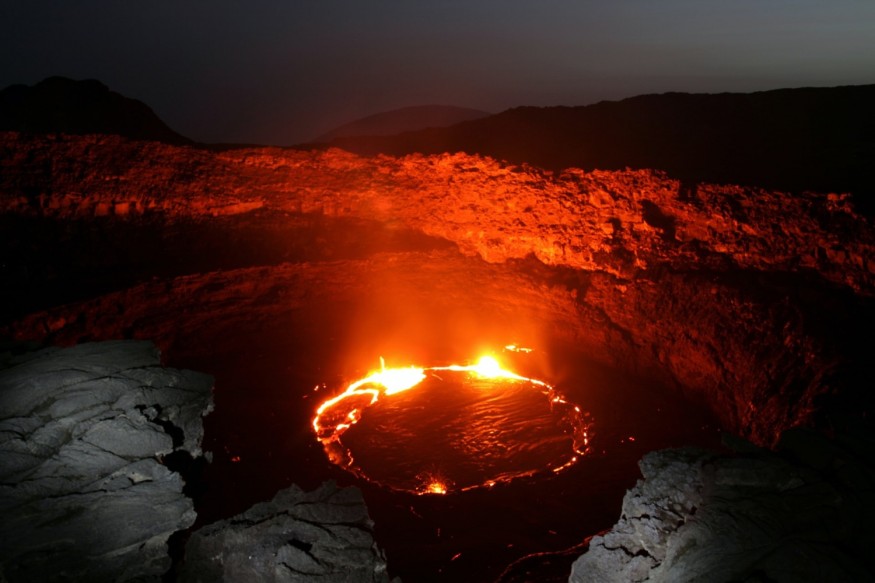
A recently discovered ancient undersea volcano near southeast of Christmas Island resembled the Lord of the Rings trilogy's "Eye of Sauron", as revealed by multibeam sonar.
The CSIRO's dedicated ocean research vessel along with the researchers were on their 12th day of 'voyage of exploration' to Australia's Indian Ocean Territories, when a 'previously unknown and unimagined' appeared on their screens, just below 3,100 meters (10,170 ft) below of the vessel.
The volcano emerged as a giant oval-shaped depression called a caldera, 6.2 km by 4.8 km across, and was "surrounded by a 300-m-high rim (resembling Sauron's eyelids), and has a 300-m-high cone-shaped peak at its center (the 'pupil')," according to Tim O'Hara, Senior Curator of Marine Invertebrates of Museums Victoria.
Calderas are often formed when a volcano collapses, forming an empty chamber as molten magma at the base of the volcano shifts upwards. When thin solid crust on the dome's surface collapses, it creates a large crater-like structure. First, from a small new peak to more formed structure in the center as the volcano continues to spew magma.
One of its kind is the famous Krakatoa Volcano in Indonesia, which erupted in 1883 and killed tens of thousands of people. Upon its huge explosion, it left bits of mountain rim visible above waves, and later on rebirthed a small volcano named Anak Krakatoa (child of Krakatoa) in 1927.
"The 'Eye of Sauron' is Not Alone."
Volcanic eruptions underwater are hard to tell. However, one of the few 'tell-tale signs' is the rafts of light pumice stone that floats on the surface of the ocean after the blow, which eventually becomes waterlogged and sinks down below the seafloor.
After further mapping of the south, the researchers also found other smaller sea mountain surrounding the 'vocanic eye', covered in numerous volcanic cones. Meanwhile, a larger, flat-topped seamount was located further into the south. The researcher then nicknamed them Barad-dûr ('Dark Fortress') and Ered Lithui ('Ash Mountains'), respectively, to carry on with the Lord of the Rings theme.
Aside from the trilogy's theme, they were also able to associate the 'jagged nature of the first and the pumice-covered surface of the second' to mountain geology.
Geologists have estimated the three Karma cluster of seamounts to be 100 million years old based on their location next to an ancient sea ridge from a time when Australia was situated much further south, near Antarctica.
"Our restless Earth is Never Still."
What puzzled the geologists is the fresh-looking structure of the Ered Lithui's caldera that should be more than 100 million years old. Looking at its sedimentation, it would have partially smothered the caldera, but instead it continued to grow new ones along its original foundation after some time.
"But life adapts to these geological changes, and Ered Lithui is now covered in seafloor animals," wrote O'Hara.
Their team are now mapping out the seafloor to survey sea life from these ancient and secluded seascapes.
© 2025 NatureWorldNews.com All rights reserved. Do not reproduce without permission.





